DIRECTED BY: F.W. Murnau
STARRING: Janet Gaynor, George O'Brien, Margaret Livingston
WON: Best Picture, Unique and Artistic Production
Best Actress in a Leading Role (Janet Gaynor)
Best Cinematography (Charles Rosher, Karl Struss)
NOMINATED FOR: Best Art Direction (Rochus Gliese)
And so we reach Sunrise. It's hard to find new things about this film to talk about. If you know anything about the film, then you know about it's groundbreaking moving cameras, it's double/triple/quadruple exposures, and it's unique intertitles (which I'll a bit in an upcoming post). I'm sure that since it's now out on a Netflix-available DVD that every scene, every frame will be pawed over and cut apart with an exacto knife to find something new.
Let me be the first. Exacto knife in hand.
Since these last few articles have been focused on the role of Janet Gaynor, on this viewing of Sunrise (my second), I focused on the acting, which turned out to be very different then the two Frank Borzage films we covered, Street Angel and 7th Heaven. Borzage's acting felt more modern. Smaller movements, more focus on the face, and flow. When a character's mood changes in a Borzage film, it appears. When a character's pose changes in Sunrise, it happens dramatically and quickly. It's the poses that are important, not the movements.
For example, the film opens with the husband character played by George O'Brien (none of the characters have names) waits impatiently for the woman from the city, whom he's having an affair with.
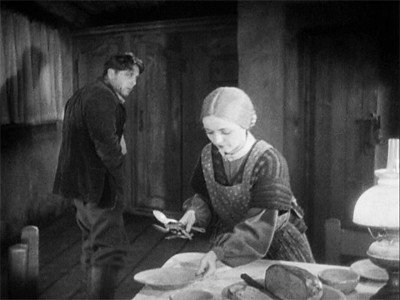
Note his dramatic, disheveled, slightly hunchback stance. Now, the Gaynor character, who walks around the scene, acting oblivious to her husband's behavior, being a goody-good house wife. Finally, the husband gets a chance to escape. The wife returns, realizes he isn't there anymore, and collapses into a chair.

We take notice of two poses in this little moment: One of her looking at the door, with a look of shock on her face, realizing that her husband is gone, and then quickly she slips into the above, one of sudden sadness when she realizes just where, and to whom, he's gone to.
The more I watch it, the more I realize that the film is told in the language of postures. There are two key moments to this idea, this first happening early on, when the wife cradles her child while she cries over her cheating husband.
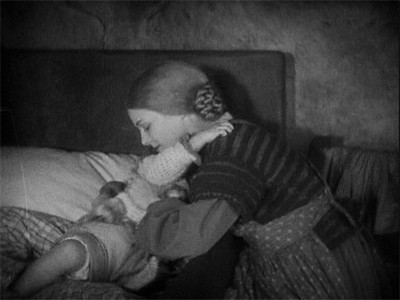
It's a tender moment, when BAM

We cut to a similar pose, of the husband and and woman from the city making love in the nearby wetlands. It's a hard cut, not a fade, so it jumps at you suddenly, and since they're positioned directly where the wife and her child were, they're directly in your line of sight. A moment of family tenderness invaded by a moment of family destruction.
The second moment happens much later, near the end of the second act. The husband and wife, after a traumatic morning, rebond and basically restart their relationship. While in the city, they decide to take a photograph. They pose for the photographer:

It's stiff and fake, of course. After some banter with the photographer, the husband and wife have a good laugh, and kiss.

It's a much more honest pose, and it's this that the photographer takes and the couple buy. Both these moments ask us to look at the various postures throughout the film and determine their meaning.
This means that many of the poses in the film end up being very exaggerated and sometimes goofy-looking.
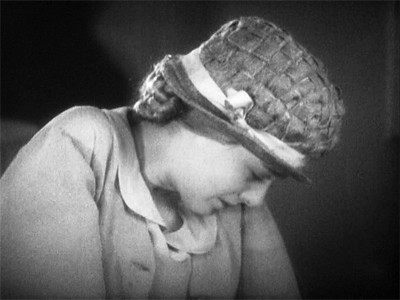

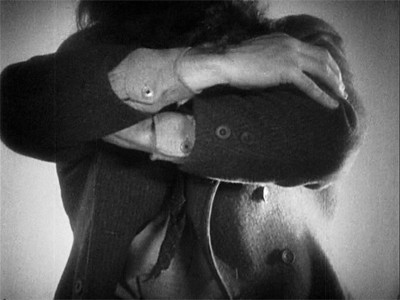
These are not action shots, people. The characters hold these poses for a nice chunk of time. The pose in the top picture? She holds that for more then a minute. I tried to do that, it hurts.
I guess it sounds silly with stills. It works a lot better while watching the film. These poses and gestures act as the most direct way to show the audience just what's going on in each character's head. In that bottom picture, where the husband looks like he's a vampire reacting to a cross, is from a scene where he battles his inner demons, and it's quite powerful stuff.
There are occasional exceptions to this big gesture stuff. Take a small moment in which the husband tells his wife that he's taken her to the city on a date.
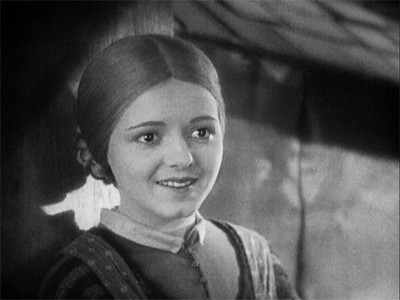
It's a long shot on just her face, and there's a lot of facial movement and a lot of subtleties. It's classic Gaynor, finally put forward, and it acts as a nice contrast to most of the film.
Speaking of Gaynor, even with her more subtle acting style put on hold, she's more physical in this film then any of her films that we've reviewed so far. There's a long foot chase in the middle of the film, and later we get a nicely choreographed dance scene.
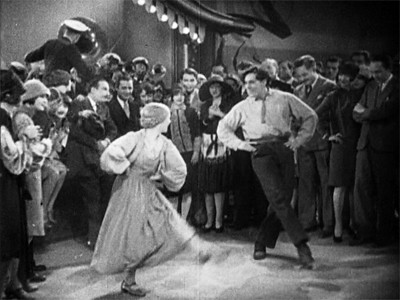
She does some stunt work too. She's right in the middle of the action during a terrible storm while the couple are out on the lake.
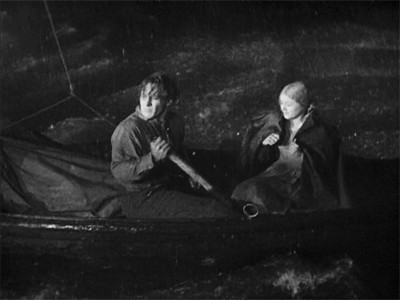
Thrown overboard, we get long extended shots of her floating in the water, barely clinging to a makeshift life preserver made of reeds.
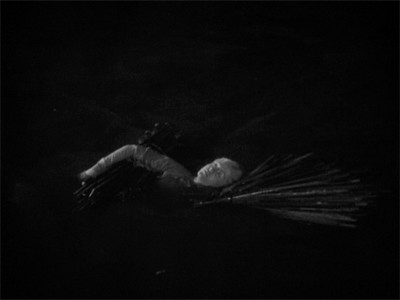
Sunrise is a film to see, so I won't spoil anymore. I'd rather you solve Murnau's posture code yourself.
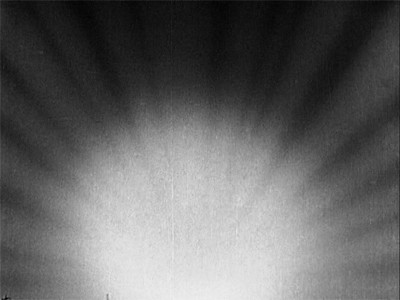
No comments:
Post a Comment